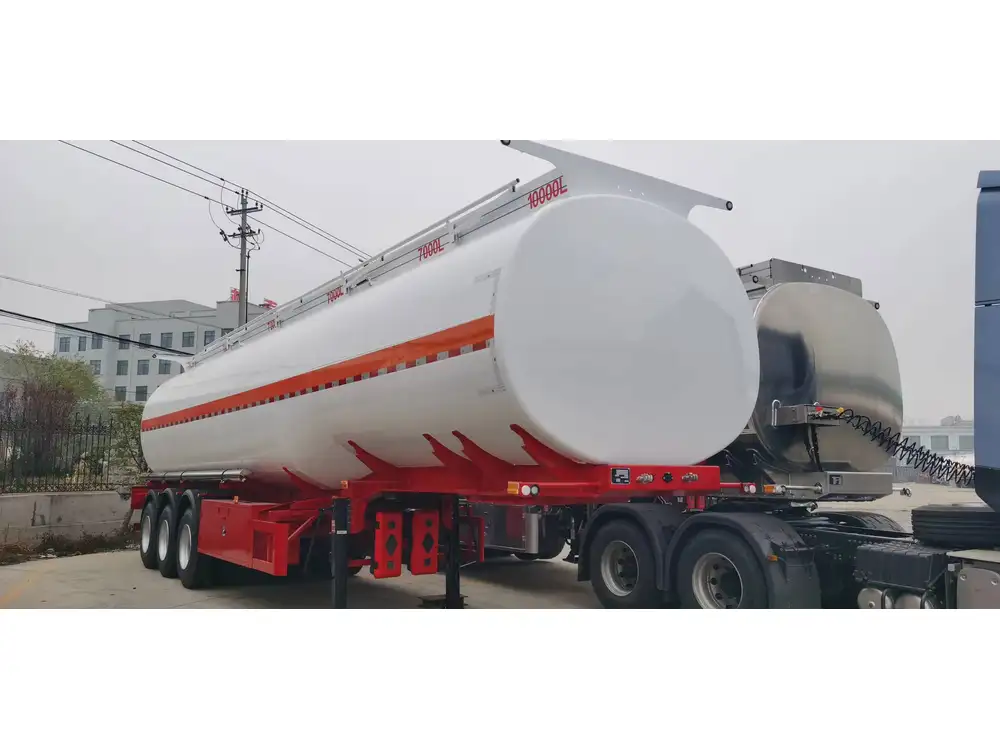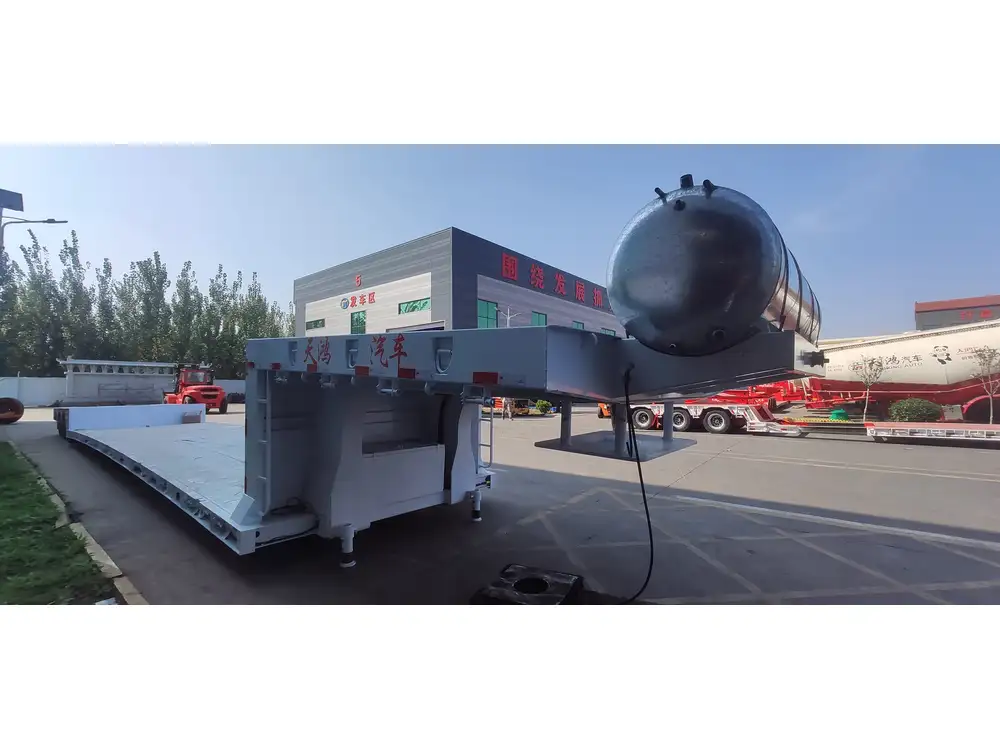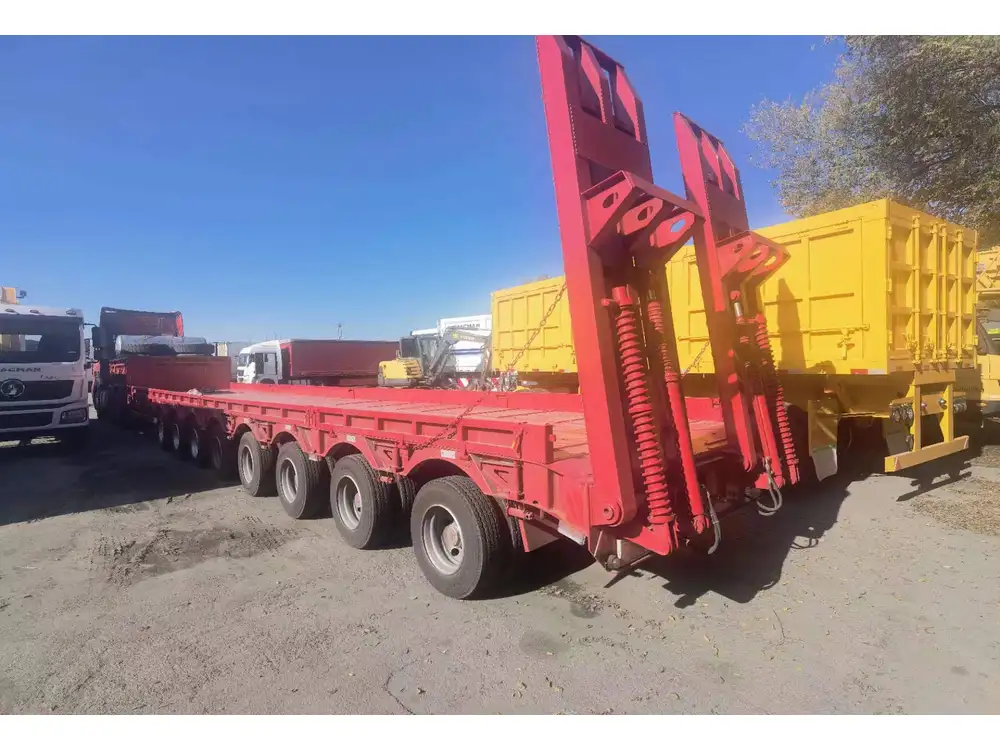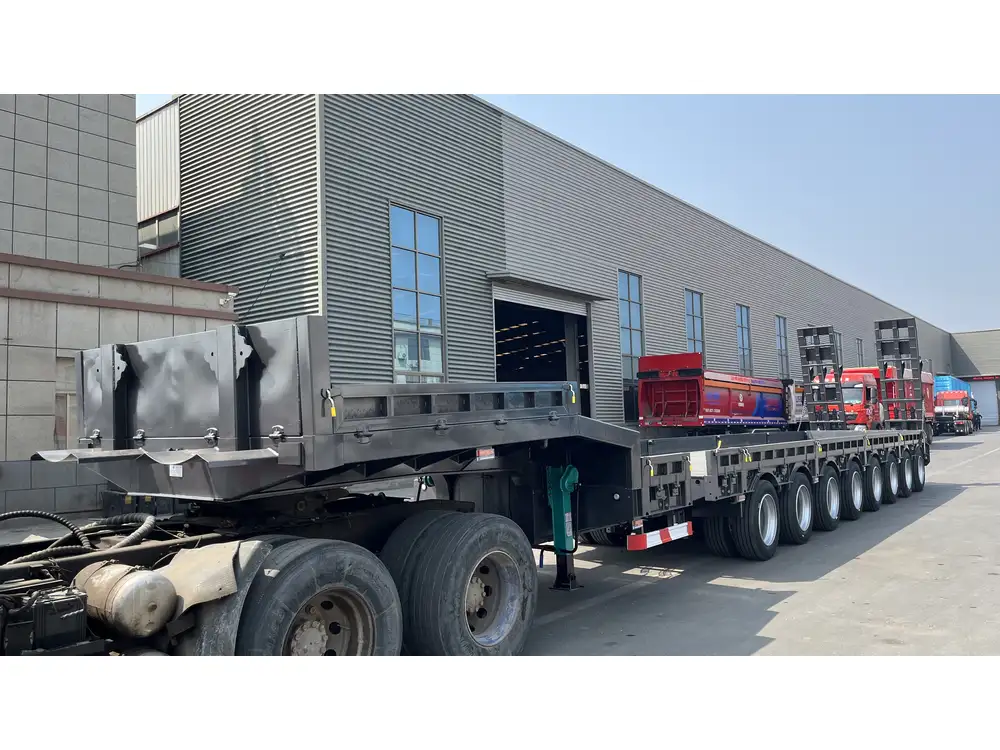Understanding Snack Food Semi Trailers
Snack food semi trailers are tailored to meet the unique demands of storing and transporting various snack food products. These trailers are built with specialized features that cater to the preservation of food quality. Whether it’s chips, crackers, granola bars, or other light snacks, having the right trailer is indispensable to ensure freshness and maintain product integrity.
Key Features of Snack Food Semi Trailers
Temperature Control Systems
- Insulated walls that maintain optimal temperature.
- Refrigeration units for temperature-sensitive items.
- Heat retention capabilities for specific snack types.
Flexible Loading Options
- Roll-up rear doors for easy access.
- Side door access for more efficient loading and unloading.
- Adjustable shelving for versatile configurations.
Enhanced Safety Features
- Anti-slip floors to prevent product damage.
- Secure tie-down points to stabilize cargo.
- Visibility enhancements such as reflective strips and internal lighting.
Durability and Resistance
- High-quality materials that endure heavy use.
- Corrosion-resistant coatings to withstand variable weather conditions.
- Robust suspension systems for better weight distribution.

Benefits of Specialized Snack Food Semi Trailers
1. Improved Shelf Life
The right trailer extends shelf life, allowing distributors to stock fresh inventory. Maintaining stable temperatures prevents spoilage, which is vital for products with specific storage requirements.
2. Regulatory Compliance
Many snack food items must adhere to food safety standards. Specialized trailers are equipped to maintain hygienic conditions, thereby assisting businesses in complying with Food and Drug Administration (FDA) regulations.

3. Increased Efficiency
With targeted designs for snack transportation, these trailers maximize space and reduce loading/unloading times. The strategic placement of shelves and compartments minimizes the movement required during distribution.
4. Maximal Payload Capacity
Snack food trailers often employ lightweight materials without sacrificing durability, allowing businesses to maximize payload capacities while optimizing fuel efficiency for better cost management.
Popular Snack Food Semi Trailer Models
Here’s a quick overview of popular models used across the industry:
| Model | Type | Temperature Control | Capacity | Special Features |
|---|---|---|---|---|
| Model A | Van Trailer | Yes | 45,000 lbs | Insulated walls |
| Model B | Reefers | Yes | 50,000 lbs | Adjustable shelving |
| Model C | Flatbed | No | 40,000 lbs | Easy side access |
| Model D | Dry Van | Yes | 42,000 lbs | High cube for larger cargo |

Comparison: Snack Food Semi Trailers vs. Standard Trailers
| Feature | Snack Food Semi Trailers | Standard Trailers |
|---|---|---|
| Insulation | High | Low |
| Temperature Regulation | Advanced | None |
| Storage Configuration | Customizable | Fixed |
| Weight Distribution | Optimized | Standard |
| Hygiene Compliance | Essential | Not prioritized |
Considerations When Choosing a Snack Food Semi Trailer
Regulatory Standards Ensure that your selected trailer complies with local and federal regulations regarding food transport. This includes material safety and hygiene protocols.
Size and Capacity Assess your operational needs. Evaluate the volume of goods you transport regularly to choose a trailer that provides ample capacity without intruding on maneuverability.
Cost-Effectiveness Analyze the cost relative to features. Investing in a higher-quality trailer can reduce long-term costs through durability and efficiency, balancing upfront expenses against future ones.
Seller Reputation Research and choose a manufacturer with a solid reputation for quality and service warranties/guarantees. This not only impacts reliability but also protects your investment.
Maintenance Tips for Snack Food Semi Trailers
Proper maintenance extends the lifespan of your snack food semi trailer and keeps your cargo safe in transit. Follow these tips for optimal care:

1. Regular Inspections
Conduct periodic checks for wear and tear on the insulation, doors, and flooring. Look for signs of damage that could compromise temperature control or cleanliness.
2. Cleanliness is Key
Effectively clean the interiors to prevent residual food odor and contamination. Use food-safe cleaning agents to maintain hygiene.
3. Monitor Tire Health
Inspect tires for pressure consistency, tread wear, and any signs of damage. Proper tire maintenance influences fuel efficiency and on-road safety.

4. Lubricate Moving Parts
Regularly lubricate door hinges, locking mechanisms, and suspension components to maintain ease of operation and prevent rust.
Common Challenges in Snack Food Transportation
Temperature Fluctuations When transporting temperature-sensitive snacks, maintaining consistent temperature is crucial. Engage monitoring technologies that provide real-time data on conditions inside the trailer.
Product Damage Prevent mix-ups and damage during transport by employing cushioned packaging and secure tie-down straps. Consider using moisture-absorbent materials to manage humidity levels.
Regulatory Complexity Vigilance is crucial when navigating FDA guidelines and state regulations. Establish a compliance checklist to ensure all necessary documentation and trailer specifications are met.
Logistical Errors Utilize efficient route planning software to minimize the risk of delays. Accurate scheduling ensures timely deliveries, preserving food quality and customer satisfaction.
Future Trends in Snack Food Semi Trailers

1. Eco-Friendly Materials
The trend toward improved sustainability is leading to the development of snack food trailers made from recyclable or biodegradable materials, enhancing environmental responsibility.
2. Smart Technology Integration
Incorporating IoT devices for temperature monitoring and GPS tracking can significantly improve operational efficiency. This leads to better load management and real-time alert systems.
3. Automation
Automation in loading and unloading processes can minimize labor costs and improve product handling, ultimately enhancing distribution efficiency.

Frequently Asked Questions (FAQ)
What Is the Average Lifespan of a Snack Food Semi Trailer?
On average, a well-maintained snack food semi trailer can last anywhere from 10 to 15 years. Routine maintenance plays a significant role in extending this lifespan.
What Are the Maintenance Costs Associated with Snack Food Semi Trailers?
Maintenance costs vary based on the trailer model and usage intensity, but regular upkeep can range from $500 to $5,000 annually.

Are Specialized Trailers More Expensive?
Yes, specialized snack food semi trailers often come with a higher initial cost due to their tailored features. However, they can yield cost savings over time through increased efficiency and longer service life.
How Do I Ensure My Cargo Stays Fresh During Hot Weather?
Use advanced insulation, airtight seals, and active refrigeration systems to manage temperatures effectively, ensuring snack food remains fresh regardless of external conditions.
Conclusion: Elevate Your Snack Food Transportation!
Investing in high-quality snack food semi trailers not only facilitates effective distribution but ensures that your products reach consumers in pristine condition. By carefully considering each vehicle’s features, maintenance needs, and operational efficiency, you can streamline your logistic processes. As the market for snack foods continues to expand, staying at the forefront of transportation technology and capability will keep your business competitive. Equip your fleet with the right tools to meet demands effortlessly, ensuring long-term success and customer satisfaction in this dynamic industry.



